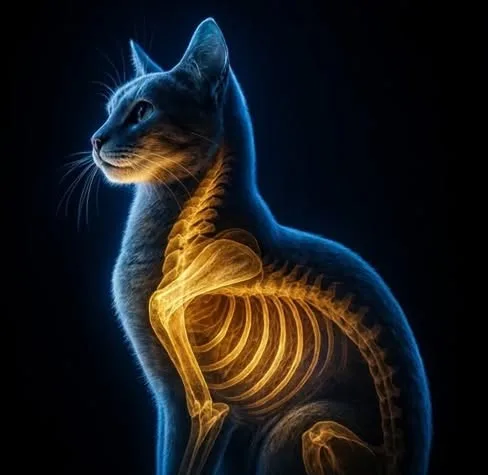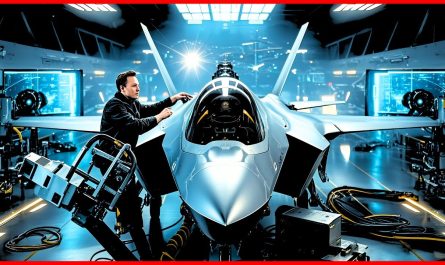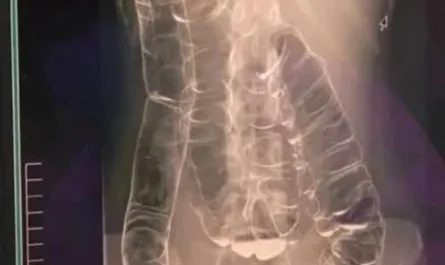If you’ve ever watched your cat pounce on a sunbeam or vanish into thin air only to reappear with a smug grin, you might already suspect it: cats are flawless. But now, science is backing up what every cat parent has known all along. Evolutionary biologists, peering through the lens of millions of years of adaptation, are calling cats—domestic and wild alike—among the most biologically refined and efficient creatures on the planet. It’s not hyperbole; it’s evolution’s stamp of approval. In a world where species scramble to adapt or fade away, cats have hit a sweet spot of perfection, barely changing their blueprint because, frankly, why mess with success?

This isn’t just feel-good fluff for feline fans. It’s rooted in peer-reviewed insights from experts like Dr. Anjali Goswami, an evolutionary biologist at London’s Natural History Museum, who argues that cats represent a “biological bullseye”—a design so honed for survival that nature has little left to tweak. Let’s dive into the whiskers and claws of why cats are the gold standard of evolutionary efficiency, and what that means for these enigmatic companions sharing our sofas (and occasionally our souls).
The Evolutionary Blueprint: Built for Stealth and Supremacy
At the heart of feline perfection is their unwavering consistency. Unlike dogs, who’ve been sculpted by humans into everything from pocket-sized purse puppies to horse-sized guardians, or bears that dabble in omnivorous buffets from berries to salmon, cats have laser-focused on one role: the ultimate carnivorous ambush predator. This specialization has kept their anatomy remarkably uniform across 37 wild species and the domestic Felis catus, from the tiniest rusty-spotted cat to the mighty Siberian tiger.
Consider the skull: Whether it’s a house cat eyeing your shoelaces or a lion sizing up a gazelle, the bone structure is nearly identical—elongated for powerful jaw muscles, optimized for slicing through flesh with serrated carnassial teeth designed exclusively for meat. Cats have ditched any vestigial plant-munching adaptations; their teeth can’t even process veggies efficiently, a bold evolutionary bet that paid off handsomely. “They’ve achieved the perfect form of a carnivorous animal and no longer need to change,” Goswami explains, contrasting them with more versatile but less specialized mammals.
This morphological stasis isn’t stagnation—it’s triumph. Cats first prowled the Earth around 25 million years ago, and their core body plan has endured with minimal tweaks. Retractable claws for silent stalking? Check. Flexible spines for explosive leaps up to six times their body length? Double check. Whiskers that act as precision radar, detecting air currents to navigate in pitch black? You bet. Every feature screams efficiency: low energy expenditure for high-reward hunts, with a metabolism tuned to feast-or-famine cycles. In ecosystems worldwide, from African savannas to Himalayan heights, cats thrive without outcompeting each other because they’re all aces at the same game—quietly dominating their niche.
Domestication: The Ultimate Test of Perfection
Here’s where it gets even more intriguing: Humans have been “domesticating” cats for about 10,000 years, yet they’ve resisted our meddling like pros. While we’ve bred dogs into 300+ breeds with wildly divergent traits, cat breeds? Mostly just fur color variations on the same sleek theme. Genetic analyses confirm it: Domestic cats remain stubbornly true to their wild African ancestors, the same size, shape, and spirit. Evolutionary biologist Jonathan Losos, in his book The Cat’s Meow, calls this “exceptional” – cats self-domesticated alongside our granaries, hunting rodents without losing their feral edge.
Why? Because they don’t need us to change them. They’re adaptable survivors, emotionally intelligent enough to read our moods (those slow blinks aren’t accidental), yet independent enough to ghost you for hours. In a 2022 genetic study, researchers found cats have retained their solitary instincts, making them the least “altered” domesticated animal—a testament to their pre-existing perfection.
The Science of Feline Efficiency: A Closer Look
To geek out a bit more, let’s break down the metrics. Evolutionary “perfection” here means peak adaptation: minimal variation signaling maximal fitness. Cats score high across the board:
| Trait | Why It’s Efficient | Evolutionary Edge |
|---|---|---|
| Sensory Suite | Eyes for low-light vision (6x human sensitivity), ears that swivel 180°, smell 14x sharper than ours. | Hunts 24/7, zero missed opportunities. |
| Muscular Mechanics | 500% muscle mass relative to body weight; can jump 5-6 ft vertically. | Energy-efficient pounces: one burst, one kill. |
| Thermoregulation | Panting-free cooling via paws and ears; sleep 12-16 hrs/day to conserve energy. | Thrives in deserts to tundras without sweat. |
| Reproductive Strategy | Litters of 4-6, mature in 6 months; high survival rates. | Rapid population rebound, low parental investment. |
The Bigger Picture: Lessons from the Cat’s Meow
So, are cats the most perfect? Biologists hedge: No organism is flawless in every context, but cats are a rare “evolutionary endpoint,” where form follows function so seamlessly that change feels redundant. Goswami sums it up: “True sophistication lies not in complexity, but in doing one thing incredibly well.” In our chaotic world, that’s a purr-fect reminder—master your niche, adapt quietly, and let the rest fall into place.
Of course, this perfection has a flip side: As apex predators, cats impact ecosystems (hello, bird lovers), and their independence can drive owners to therapy. But that’s part of the charm. Science confirms what our hearts have whispered: Cats aren’t just pets; they’re evolutionary icons.
What about you? Got a “perfect” cat story? Share in the comments—bonus points for videos of midnight zoomies. And if you’re team cat over dog, you’re in good company with Darwin himself, who adored his feline friends.
Sources: Insights drawn from evolutionary biology research and expert analyses.





